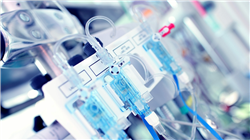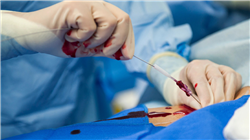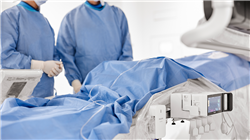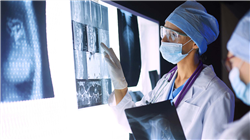University certificate
The world's largest faculty of medicine”
Description
Thanks to this 100% online Postgraduate diploma, you will perform interventional procedures such as endovascular repair of Aortic Aneurysms in a safe and effective way"

In the face of an aging global population, along with the increasing prevalence of cardiovascular diseases, Aortic and Pelvic Interventional Procedures have become increasingly important. Reports from the International Heart Federation reveal that more than a quarter of the world's population suffers from some form of vascular pathology, highlighting the need for specialists to perform more effective and less invasive interventional procedures. In this context, physicians need to delve into these techniques to incorporate them into their usual clinical procedures with maximum efficiency.
In this scenario, TECH is developing an innovative program in Aortic and Pelvic Interventional Procedures. The academic itinerary will delve into state-of-the-art vascular procedures, among which Balloon Angioplasty stands out. In this same line, the syllabus will delve into aspects ranging from the placement of Stent-Grafts in Aneurysm treatments or Embolization techniques to diagnostic imaging procedures. In addition, the program will examine the use of Artificial Intelligence in Thoracic Aortic Interventional Procedures, in view of its usefulness in optimizing the precision of the procedures. In this way, graduates will develop advanced competencies to plan and perform interventions based on both anatomy and specific pathology of individuals.
The methodology of this program reinforces its innovative character. To this end, it employs the Relearning methodology, based on the repetition of key concepts to fix knowledge and facilitate learning. In this way, the combination of flexibility and a robust pedagogical approach makes it highly accessible. In addition, physicians will have access to a didactic library with a variety of multimedia resources in different formats such as interactive summaries, explanatory videos and infographics. The specialists will also be specialized in simulated learning environments to extract valuable lessons that will be applied in their work practice.
You will achieve your objectives with the support of TECH didactic tools, including explanatory videos and interactive summaries"
This Postgraduate diploma in Aortic and Pelvic Interventional Procedures contains the most complete and up-to-date scientific program on the market. The most important features include:
- The development of practical cases presented by experts in Angiology and Vascular Surgery
- The graphic, schematic and eminently practical contents with which it is conceived gather scientific and practical information on those disciplines that are indispensable for professional practice
- Practical exercises where the self-assessment process can be carried out to improve learning
- Its special emphasis on innovative methodologies
- Theoretical lessons, questions to the expert, debate forums on controversial topics, and individual reflection assignments
- Content that is accessible from any fixed or portable device with an Internet connection
Take this university program to update your knowledge at your own pace and without time constraints, thanks to the Relearning system"
The program's teaching staff includes professionals from the sector who bring their work experience into this specialization, as well as recognized specialists.
of reference societies and prestigious universities.
The multimedia content, developed with the latest educational technology, will provide the professional with situated and contextual learning, i.e., a simulated environment that will provide immersive education programmed to learn in real situations.
This program is designed around Problem-Based Learning, whereby the professional must try to solve the different professional practice situations that arise during the course. For this purpose, students will be assisted by an innovative interactive video system created by renowned and experienced experts.
You will master the Balloon Angioplasty procedure and restore flow"

You will delve into the therapeutic approach to treat Aortic Dissection"
Syllabus
Through this program, physicians will have a solid anatomical and functional understanding of both the aortic and pelvic regions to apply interventional methods. The syllabus will delve into procedures such as Balloon Angioplasty, Stenting and Endovascular Ablation. In this sense, the syllabus will analyze diagnostic imaging techniques and evaluation methods for conditions such as Intramural Hematoma. The program will also provide the graduates with innovative strategies for endovascular treatment, which will be of great use in managing complications. In this way, specialists will develop advanced competencies to perform interventions based on patient specificities.

You will acquire skills to effectively use sophisticated technologies such as Computed Tomography or Magnetic Resonance Imaging"
Module 1. Vascular Interventions
1.1. Balloon Angioplasty
1.1.1. Angioplasty Mechanisms
1.1.2. Patient Selection and Preprocedural Evaluation
1.1.3. Angioplasty Techniques and Procedures
1.2. Embolic Protection Devices
1.2.1. Embolic Protection Devices
1.2.2. Indications and Clinical Utility
1.2.3. Safety and Potential Complications of Atheroembolism
1.3. Stents and Stent-Grafts for Endovascular Treatment
1.3.1. Stents and Stent-Grafts
1.3.2. Implantation and Placement Techniques
1.3.3. Stent-Grafts in the Treatment of Aneurysms
1.4. Pharmacological Thrombolysis in Acute Thrombosis
1.4.1. Thrombolytic Agents
1.4.2. Administration and Monitoring Protocols
1.4.3. Clinical Outcomes and Associated Complications
1.5. Mechanical Thrombectomy in Acute Thrombosis
1.5.1. Thrombectomy Devices
1.5.2. Thrombectomy Procedures and Techniques
1.5.3. Outcomes and Effectiveness in Vascular Recanalization
1.6. Pharmacomechanical Thrombolysis in Acute Thrombosis
1.6.1. Pharmacomechanical Thrombolysis
1.6.2. Devices and Techniques Used
1.6.3. Comparison with Other Methods of Thrombolysis
1.7. Vasodilator Drugs in Limb Ischemia
1.7.1. Mechanism of Action and Vasodilator Effects in Limb Ischemia
1.7.2. Clinical Uses in Vascular Interventions
1.7.3. Administration of Drugs and Monitoring of Results after Administration of Vasodilator Drugs
1.8. Endovascular Embolization and Ablation in Vascular Malformations
1.8.1. Embolization and Ablation
1.8.2. Embolization Techniques
1.8.3. Endovascular Ablation: Methods and Clinical Applications
1.9. Pseudoaneurysms of Arterial Access
1.9.1. Evaluation of Pseudoaneurysms after Radial Access
1.9.2. Endovascular and Surgical Treatment
1.9.3. Follow-up and Management of Complications
1.10. Implantation of Devices for Endovascular Treatment
1.10.1. Implantation Techniques
1.10.2. Device Selection for Endovascular Treatment
1.10.3. Perioperative Management and Postimplantation Follow-Up
Module 2. Thoracic Aorta Interventional Procedures
2.1. Interventional Procedures in Ascending Aortic Aneurysms
2.1.1. Associated Risk Factors
2.1.2. Clinical Manifestations and Diagnostic Methods
2.1.3. Treatment and Management of Ascending Aortic Aneurysms
2.2. Interventional Procedures in Aortic Arch Aneurysms
2.2.1. Diagnostic Evaluation and Imaging Strategies
2.2.2. Therapeutic Approaches for Transverse Arc Aneurysms
2.2.3. Innovations and Future Directions
2.3 Interventional Procedures for Descending Thoracic Aortic Aneurysms
2.3.1. Aneurysms of the Descending Thoracic Aorta
2.3.2. Clinical Findings and Diagnostic Imaging
2.3.3. Treatment and Management of Aneurysms of the Descending Thoracic Aorta
2.4. Interventional Procedures in Aortic Dissection
2.4.1. Clinical Manifestations and Differential Diagnosis
2.4.2. Therapeutic Approach and Treatment Strategies for Aortic Dissection
2.4.3. Innovations and Future Directions
2.5. Interventional Procedures in Intramural Hematoma
2.5.1. Diagnostic Imaging and Evaluation Methods in Intramural Hematoma
2.5.2. Treatment and Management of Intramural Hematoma
2.5.3. Innovations and Future Directions
2.6. Interventional Procedures in Penetrating Aortic Ulcers
2.6.1. Pathogenic Mechanisms
2.6.2. Clinical Diagnosis and Radiological Evaluation
2.6.3. Therapeutic Options and Surgical Considerations
2.7. Interventional Procedures in Trauma involving the Thoracic Aorta
2.7.1. Trauma Affecting the Thoracic Aorta
2.7.2. Initial Evaluation and Diagnosis of Traumatic Aortic Injuries
2.7.3. Emergency Management and Therapeutic Considerations in Aortic Trauma
2.8. Interventional Procedures in Vasculitis
2.8.1. Underlying Pathology and Inflammatory Mechanisms
2.8.2. Clinical Manifestations and Diagnostic Methods
2.8.3. Treatment and Management of Vasculitides Affecting the Thoracic Aorta
2.9. Interventional Procedures in Aortic Coarctation
2.9.1. Pathophysiology and Clinical Presentation
2.9.2. Diagnosis and Evaluation of Aortic Coarctation
2.9.3. Treatment Strategies and Long-Term Follow-Up
2.10. Use of Artificial Intelligence in Thoracic Aortic Interventional Procedures
2.10.1. AI Applications in Vascular Image Analysis
2.10.2. Outcome Prediction and Treatment Selection
2.10.3. Integration of AI in Endovascular Procedures
Module 3. Interventional Procedures in the Abdominal Aorta and Iliac Arteries
3.1. Interventional Procedures in the Abdominal Aorta
3.1.1. Evaluation of the Abdominal Aorta through Imaging Techniques
3.1.2. Associated Pathologies and Clinical Considerations in the Abdominal Aorta
3.1.3. Endovascular Treatment Strategies and Management of Complications
3.2. Interventional Procedures in the Iliac Arteries and their Branches
3.2.1. Main Arterial Branches and their Function
3.2.2. Diseases and Disorders Affecting the Iliac Arteries
3.2.3. Endovascular Treatment Strategies and Management of Complications
3.3. Interventional Procedures in Aneurysms of the Lliac Artery
3.3.1. Risk Factors for the Development of Aneurysms in the Abdominal Aorta and Pelvic Arteries
3.3.2. Diagnosis and Evaluation of Aneurysms by Imaging Techniques
3.3.3. Endovascular Treatment Options and Management of Aneurysms of the Abdominal Aorta and Iliac Arteries
3.4. Interventional Procedures in Occlusive Disease
3.4.1. Occlusive Disease in the Abdominal Aorta and Pelvic Arteries
3.4.2. Diagnostic Evaluation and Diagnostic Imaging Methods
3.4.3. Endovascular Therapeutic Strategies to Address Occlusive Disease of the Abdominal Aorta and Pelvic Arteries
3.5. Interventional Procedures in Dissection
3.5.1. Dissection of the Abdominal Aorta and Pelvic Arteries
3.5.2. Diagnosis and Evaluation of Dissection Using Imaging Techniques
3.5.3. Endovascular Treatment Approaches and Therapeutic Considerations for Vascular Dissection
3.6. Infection after Endovascular Treatment
3.6.1. Infections after Endovascular Treatment in Abdominal Aorta and Iliac Arteries
3.6.2. Clinical Manifestations and Diagnosis of Vascular Infection
3.6.3. Endovascular Treatment and Management of Infections in the Abdominal Aorta and Iliac Arteries
3.7. Interventional Procedures in Embolic Occlusion
3.7.1. Vascular Occlusion due to Embolism
3.7.2. Diagnosis and Evaluation of Embolic Occlusion by Imaging Techniques
3.7.3. Endovascular Therapeutic Strategies for the Management of Embolic Occlusion in the Abdominal Aorta and Iliac Arteries
3.8. Interventional Procedures in Vasculitis
3.8.1. Vasculitis in the Abdominal and Pelvic Vascular System
3.8.2. Diagnosis and Evaluation of Vascular Vasculitis
3.8.3. Endovascular Treatment and Management of Vasculitis in the Abdominal Aorta and Iliac Arteries
3.9. Interventional Procedures in Trauma of the Abdominal Aorta and Iliac Arteries
3.9.1. Trauma Affecting the Abdominal Aorta and Pelvic Arteries
3.9.2. Initial Evaluation and Diagnosis of Traumatic Vascular Injuries
3.9.3. Emergency Management and Endovascular Therapeutic Considerations in Abdominal and Pelvic Vascular Trauma
3.10. Use of Artificial Intelligence in Thoracic Aortic Interventional Procedures
3.10.1. AI Applications in Vascular Image Analysis
3.10.2. Outcome Prediction and Treatment Selection
3.10.3. Integration of AI in Endovascular Procedures

You will have access to a library of multimedia resources 7 days a week, 24 hours a day"
..







